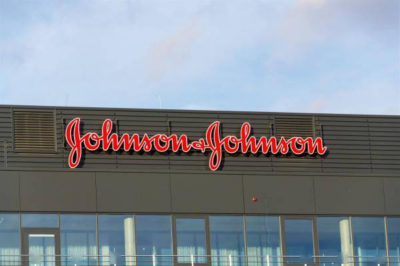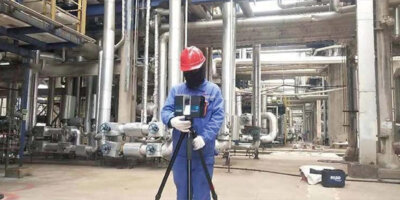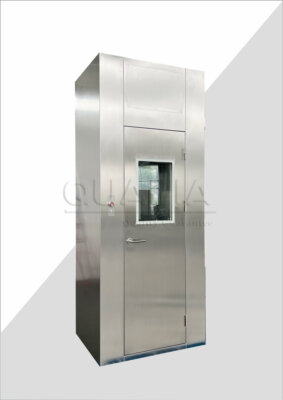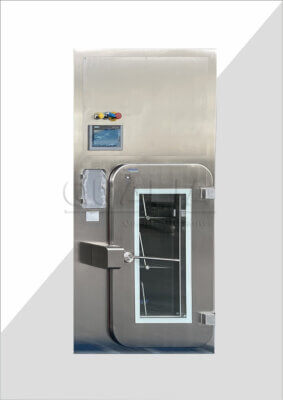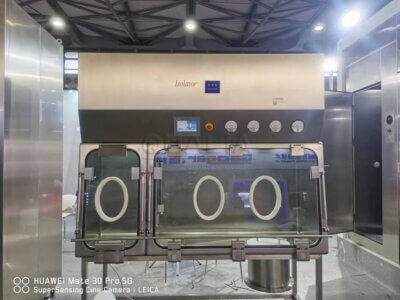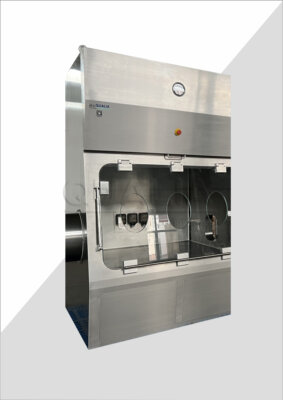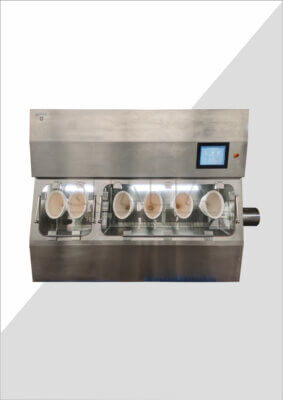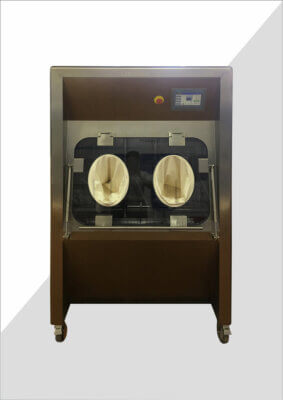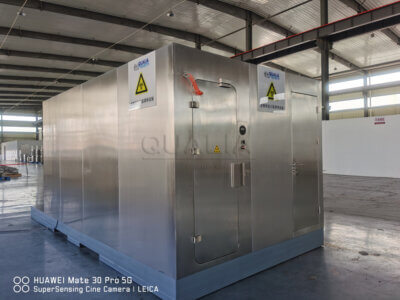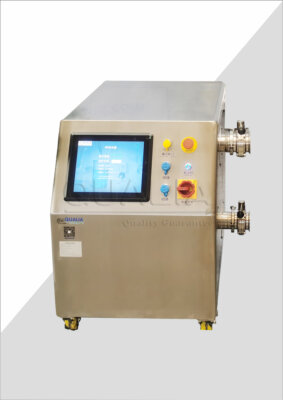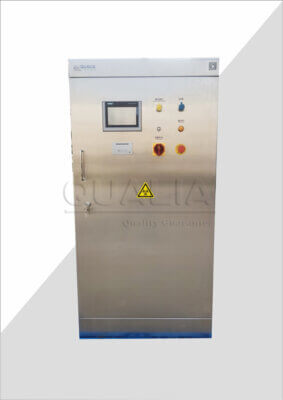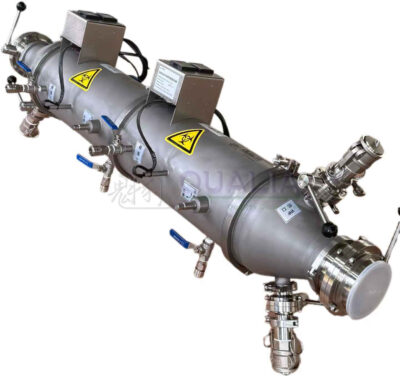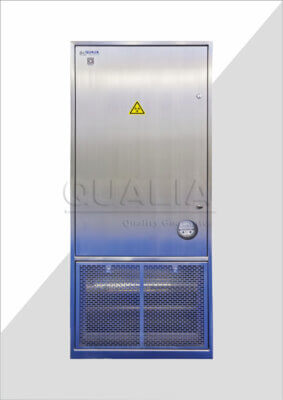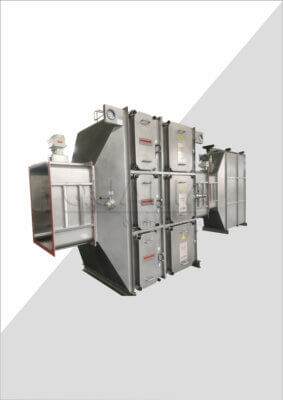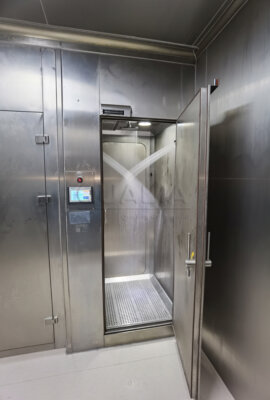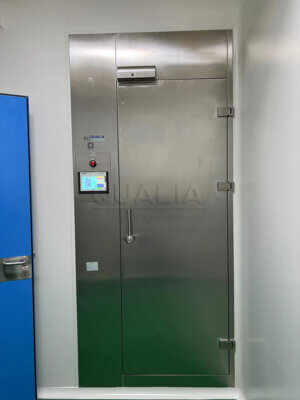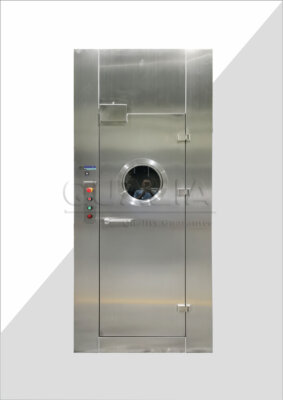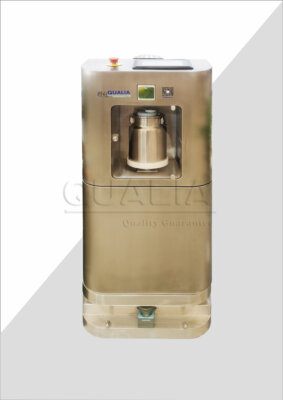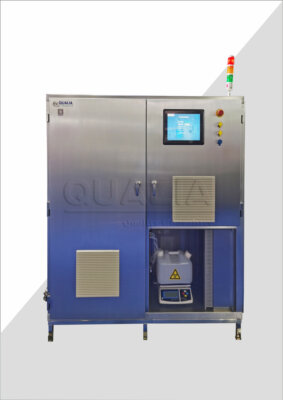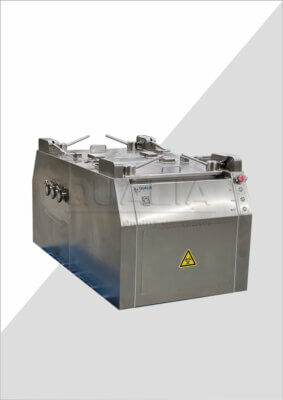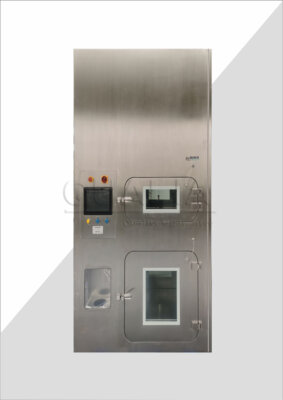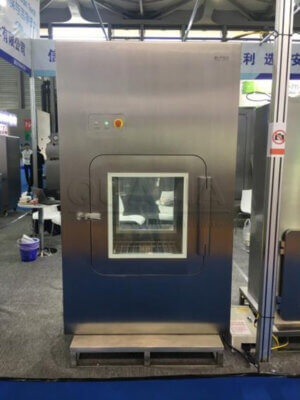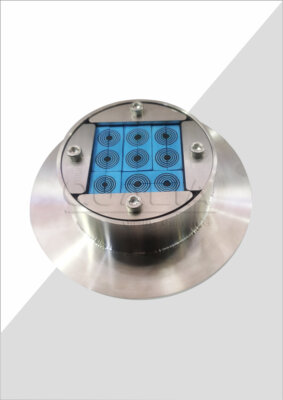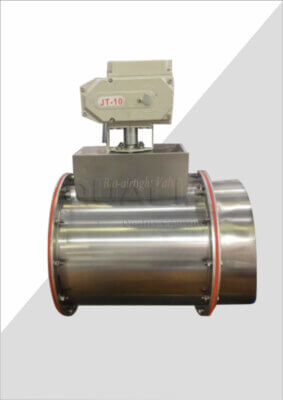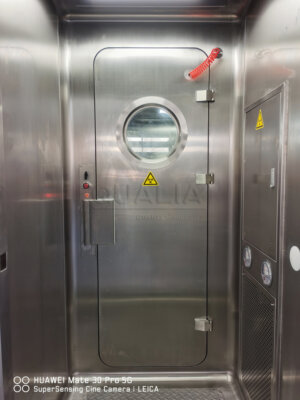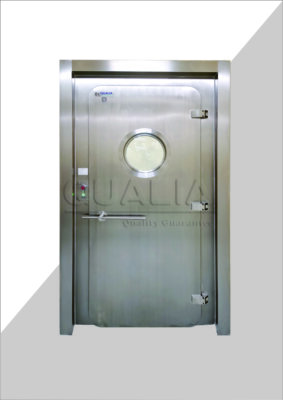In today’s demanding industrial environments, contamination control and personnel safety represent critical challenges that can make or break operational efficiency. Manufacturing facilities, pharmaceutical plants, and research laboratories face mounting pressure to prevent cross-contamination while maintaining seamless workflow processes. The consequences of inadequate containment systems extend far beyond regulatory compliance issues—they can result in product recalls, equipment damage, and substantial financial losses that cripple business operations.
Mechanical seal APR doors emerge as a sophisticated solution to these containment challenges, offering advanced airlock protection through precisely engineered pressure regulation systems. This comprehensive guide explores the fundamental principles, components, and practical applications of APR door technology, providing decision-makers with the technical insights needed to implement effective containment strategies.
What Are Mechanical Seal APR Doors?
Mechanical seal APR doors represent specialized containment systems designed to create controlled environmental barriers between different atmospheric zones. APR, standing for “Airlock Pressure Regulation,” describes the core functionality of these advanced sealing mechanisms that maintain precise pressure differentials across multiple chambers.
Core Design Principles
The fundamental concept behind APR doors centers on mechanical sealing principles that utilize differential pressure management to prevent unwanted material transfer. Unlike conventional doors that simply provide physical barriers, APR systems actively regulate airflow patterns to ensure contamination-free transitions between environments.
According to industrial containment specialist Dr. Sarah Chen, “APR doors function as dynamic barriers that respond to pressure variations in real-time, providing containment integrity that static sealing methods cannot achieve.” This adaptive capability makes them particularly valuable in applications where maintaining sterile or controlled atmospheres is paramount.
Technical Classification
APR doors fall into three primary categories based on their operational mechanisms:
| APR Door Type | Pressure Range | Primary Application |
|---|---|---|
| Low-Pressure Systems | 0.1-2.0 Pa | Pharmaceutical manufacturing |
| Medium-Pressure Systems | 2.0-15.0 Pa | Chemical processing |
| High-Pressure Systems | 15.0+ Pa | Hazardous material handling |
The selection criteria depend heavily on specific containment requirements, with each category offering distinct advantages for particular industrial applications.
How Do APR Doors Work in Mechanical Sealing Systems?
The operational mechanics of APR doors rely on sophisticated pressure monitoring and automatic adjustment systems that maintain predetermined environmental conditions. These systems continuously analyze atmospheric pressure variations and respond through integrated control mechanisms.
Pressure Differential Management
The primary function involves creating and maintaining controlled pressure gradients across door interfaces. When personnel or materials pass through the system, sensors detect pressure variations and trigger compensatory airflow adjustments. This process ensures that contamination migration remains within acceptable parameters throughout transition periods.
Research conducted by the International Containment Association demonstrates that properly configured APR systems achieve contamination prevention rates exceeding 99.8% under normal operating conditions. This exceptional performance stems from the system’s ability to maintain consistent pressure differentials regardless of external environmental fluctuations.
Automated Response Systems
Modern APR doors incorporate advanced automation that eliminates human error factors in containment management. The system continuously monitors multiple parameters:
- Pressure differential readings across all containment zones
- Airflow velocity measurements at critical transition points
- Door seal integrity status through embedded sensor networks
- Environmental condition variations including temperature and humidity
When deviations from predetermined parameters occur, the system automatically implements corrective measures within milliseconds, ensuring continuous containment effectiveness.
What Are the Basic Components of APR Door Design?
Understanding mechanical seal components provides essential insight into APR door functionality and maintenance requirements. Each element contributes to the system’s overall containment performance and operational reliability.
Primary Sealing Elements
The foundation of any APR door system consists of multiple sealing layers that work in coordination to prevent atmospheric mixing. Primary seals typically utilize advanced elastomeric materials engineered for specific chemical compatibility and temperature ranges.
Basic APR door design incorporates redundant sealing mechanisms that ensure continued operation even if individual components experience wear or damage. This redundancy proves particularly crucial in critical applications where containment failure could result in significant safety or financial consequences.
Pressure Monitoring Infrastructure
Sophisticated sensor networks form the intelligence backbone of APR door systems. These components include:
- Differential pressure transducers that provide real-time pressure readings
- Flow rate sensors that monitor air movement patterns
- Position indicators that track door movement and seal engagement
- Environmental sensors that detect temperature, humidity, and atmospheric composition changes
Industry data indicates that systems with comprehensive monitoring capabilities demonstrate 40% longer operational lifespans compared to basic configurations, primarily due to predictive maintenance capabilities enabled by continuous condition monitoring.
Control System Architecture
The control system integrates all operational elements through programmable logic controllers (PLCs) that execute complex containment algorithms. These systems process sensor data, calculate optimal response parameters, and implement corrective actions automatically.
Mechanical Drive Components
APR doors require precise mechanical systems that can operate reliably under varying pressure conditions. Key components include:
| Component | Function | Typical Specifications |
|---|---|---|
| Servo Motors | Door positioning control | 0.1-5.0 kW power range |
| Gear Reducers | Torque multiplication | 10:1 to 100:1 ratios |
| Linear Actuators | Seal engagement | 500-5000N force output |
| Emergency Systems | Fail-safe operation | Battery backup 4-8 hours |
What Functions Do APR Doors Serve in Industrial Applications?
APR door functions extend far beyond simple containment, encompassing comprehensive environmental management capabilities that address multiple operational challenges simultaneously.
Contamination Prevention
The primary function involves preventing cross-contamination between different atmospheric zones. This capability proves particularly critical in pharmaceutical manufacturing, where even trace contamination can compromise entire production batches worth millions of dollars.
In our experience working with major pharmaceutical manufacturers, properly implemented APR systems reduce contamination incidents by approximately 85% compared to conventional airlock systems. This improvement stems from the system’s ability to maintain consistent pressure differentials regardless of operator behavior or external environmental conditions.
Personnel Safety Enhancement
APR doors provide crucial protection for personnel working in hazardous environments. The system’s ability to maintain controlled atmospheric conditions prevents exposure to toxic substances, radioactive materials, or other dangerous contaminants.
According to safety data compiled by the Occupational Safety Institute, facilities utilizing APR door systems report 60% fewer safety incidents related to atmospheric contamination compared to facilities using conventional containment methods.
Energy Efficiency Optimization
Modern APR systems contribute significantly to energy efficiency by minimizing unwanted air exchange between controlled environments. This capability reduces heating, cooling, and air conditioning loads while maintaining required environmental conditions.
Process Quality Assurance
APR doors serve critical roles in maintaining process quality by preventing atmospheric variations that could affect sensitive manufacturing operations. This function proves particularly valuable in:
- Precision manufacturing where atmospheric stability affects product quality
- Research applications requiring controlled experimental conditions
- Food processing where atmospheric contamination affects product safety
- Electronics manufacturing where particle contamination affects yield rates
How to Choose the Right APR Door Configuration?
Selecting appropriate APR door configurations requires careful analysis of specific application requirements, environmental conditions, and operational constraints. The decision-making process should consider multiple factors that influence long-term performance and cost-effectiveness.
Application-Specific Requirements
Different industrial applications demand varying levels of containment performance. Pharmaceutical manufacturing typically requires more stringent containment than general industrial applications, while radioactive material handling demands even higher performance standards.
Key selection criteria include:
- Required pressure differential ranges based on containment specifications
- Throughput requirements determining door size and cycle frequency
- Chemical compatibility ensuring materials resist process-specific substances
- Regulatory compliance meeting industry-specific standards and certifications
Environmental Considerations
Operating environment characteristics significantly influence APR door selection. Temperature extremes, humidity variations, and corrosive atmospheres all affect component selection and system configuration.
For instance, systems operating in high-humidity environments require specialized sealing materials and enhanced corrosion protection, while high-temperature applications demand heat-resistant components and modified control algorithms.
Cost-Benefit Analysis
| Configuration Factor | Initial Cost Impact | Long-term Cost Impact |
|---|---|---|
| Redundant Systems | +25-40% | -15-25% (reduced downtime) |
| Advanced Monitoring | +15-30% | -20-35% (predictive maintenance) |
| Custom Materials | +10-50% | Variable (depends on application) |
As containment engineer Michael Rodriguez notes, “The most expensive APR door is often the one that fails to meet application requirements, regardless of initial purchase price.”
What Are the Advantages and Limitations of APR Door Systems?
Understanding both benefits and constraints of APR door technology enables informed decision-making and realistic performance expectations.
Primary Advantages
Superior containment performance represents the most significant advantage of APR door systems. The active pressure management capabilities provide containment effectiveness that passive systems cannot match, particularly in applications with frequent personnel or material transfers.
Reduced operational complexity emerges as another key benefit. Once properly configured, APR systems require minimal operator intervention, reducing training requirements and eliminating human error factors that compromise containment integrity.
Enhanced safety margins result from the system’s ability to maintain containment even during unexpected events such as power fluctuations or equipment malfunctions. Emergency backup systems ensure continued operation during critical situations.
System Limitations
Higher initial investment requirements represent the primary limitation of APR door technology. Complex control systems, precision sensors, and specialized materials increase upfront costs compared to conventional containment methods.
Maintenance complexity requires skilled technicians familiar with sophisticated control systems and pressure management principles. While overall maintenance requirements may be lower, the technical expertise needed for service and repair is considerably higher.
Power dependency creates vulnerability to electrical system failures, though battery backup systems mitigate this concern in most applications.
Performance Considerations
Research conducted by the Advanced Containment Technology Institute demonstrates that APR systems achieve optimal performance when properly matched to application requirements. Oversized systems waste energy and increase costs, while undersized systems may fail to provide adequate containment.
How Do APR Doors Compare to Traditional Sealing Methods?
Comparative analysis reveals significant performance differences between APR door systems and conventional containment methods, particularly in demanding industrial applications.
Performance Metrics
Traditional airlock systems typically achieve containment effectiveness rates of 90-95% under optimal conditions, while properly configured APR systems consistently exceed 99% effectiveness. This improvement stems from active pressure management capabilities that respond to changing conditions automatically.
Energy efficiency comparisons show APR systems consuming 20-30% less energy than conventional systems due to optimized airflow management and reduced unnecessary air exchange between controlled environments.
Operational Characteristics
APR doors demonstrate superior performance in high-traffic applications where frequent door operations compromise containment integrity in traditional systems. The active pressure management compensates for pressure variations caused by regular personnel movement.
Cost Analysis
While initial costs for APR systems typically exceed traditional methods by 40-60%, total cost of ownership analysis reveals different results. Mechanical seal APR doors from established manufacturers like QUALIA Bio-Tech demonstrate operational cost advantages through reduced energy consumption, lower maintenance requirements, and extended service life.
| Cost Factor | Traditional Systems | APR Door Systems |
|---|---|---|
| Initial Investment | Baseline | +40-60% |
| Annual Operating Costs | Baseline | -20-25% |
| Maintenance Costs | Baseline | -10-15% |
| Energy Consumption | Baseline | -25-30% |
This analysis demonstrates that APR systems typically achieve cost parity within 3-5 years of operation, with continued cost advantages throughout their operational lifetime.
Conclusion
Mechanical seal APR doors represent a significant advancement in industrial containment technology, offering superior performance characteristics that address critical challenges in contamination control and personnel safety. The sophisticated pressure management systems provide containment effectiveness exceeding 99%, while automated control systems eliminate human error factors that compromise traditional containment methods.
Key insights from this analysis include the importance of proper system sizing, the value of redundant safety systems, and the long-term cost advantages of advanced containment technology. Organizations considering APR door implementation should focus on comprehensive application analysis and partnership with experienced manufacturers who understand the complexities of industrial containment requirements.
The future of containment technology points toward increasingly sophisticated systems that integrate artificial intelligence and predictive maintenance capabilities. As regulatory requirements continue to evolve and industrial processes become more demanding, APR door technology will likely become the standard for critical containment applications.
For organizations ready to implement advanced containment solutions, partnering with established manufacturers ensures access to proven technology and comprehensive support services. Consider exploring specialized APR door systems designed for specific industrial applications, as the investment in proper containment technology pays dividends through improved safety, reduced operational costs, and enhanced process reliability.
What specific containment challenges does your facility face, and how might APR door technology address these operational requirements?
Frequently Asked Questions
Q: What are mechanical seal APR doors?
A: Mechanical seal APR doors are specialized containment doors designed to create an airtight barrier in high-security environments such as biosafety labs and cleanrooms. Unlike standard doors, these use robust gaskets—often made from silicone or EPDM rubber—that compress tightly against the door frame when closed, preventing air or contaminants from passing through. The sealing is achieved by the physical force of the door’s locking mechanism, ensuring a secure, leak-proof environment essential for safety and contamination control.
Q: What are the basic components of mechanical seal APR doors?
A: The main components of mechanical seal APR doors include:
- Gasket: A durable, compressible seal (usually silicone or EPDM) that forms the airtight barrier when the door is closed.
- Locking Mechanism: Applies consistent pressure to compress the gasket against the frame, creating the seal.
- Door Frame: Provides a stable, flat surface against which the gasket is pressed; must remain undamaged and properly aligned for effective sealing.
- Hinges: Ensure the door aligns correctly with the frame; proper adjustment prevents gaps that could compromise the seal.
Regular inspection and maintenance of these components are crucial for maintaining the door’s performance and safety.
Q: How do mechanical seal APR doors function?
A: Mechanical seal APR doors function by using the closing force to compress a gasket against the door frame, creating an airtight seal. When the door is closed and locked, the mechanism applies even pressure across the entire perimeter, eliminating gaps. Precision alignment is essential—any misalignment or uneven pressure can reduce sealing effectiveness and risk containment breaches. These doors are manually operated and rely on physical compression rather than automated systems, making regular checks for wear, alignment, and gasket integrity vital for reliable operation.
Q: What are the advantages of mechanical seal APR doors?
A: Mechanical seal APR doors offer several key benefits:
- Reliable Containment: Provide a dependable, physical barrier against air and contaminant leakage.
- Durability: Constructed from robust materials designed for long-term use in demanding environments.
- Simplicity: Manual operation means fewer moving parts and lower risk of mechanical failure compared to automated systems.
- Cost-Effectiveness: Generally less expensive to install and maintain than
External Resources
- Pneumatic Seal APR Doors & Mechanical Seal APR Doors – Youth – Explains the principles of mechanical sealing in APR doors, describing the components and maintenance needed for effective airtight containment.
- APR Doors with Airtight Mechanical Seals – Presray – Details the construction and manual operation of mechanical seal APR doors, their applications, and components required for reliable airtight barriers.
- Biosafety Airtight Doors: Essential Components for Contamination Control – Youth – Breaks down the major parts and functions of biosafety doors, including the roles of mechanical seals in maintaining sterile environments.
- Understanding Pneumatic APR Door Seal Technology – QUALIA – Provides a comparison between pneumatic and mechanical seal APR doors, their key differences, and component functions for airtight containment.
- Pneumatic Seal APR Doors – Presray – Reviews the features and component design differences between pneumatic and mechanical sealed doors in critical containment spaces.
- Mechanical and Pneumatic APR Door Seals: Solutions for Biosafety Facilities – QUALIA – Offers an overview of basic components, common functions, and selection criteria for mechanical seal APR doors within biosafety and cleanroom environments.
Related Contents:
- What Are APR Door Pneumatic Seals and How They Work
- Understanding Pneumatic APR Door Seal Technology
- Mechanical Seal APR Door Systems | Installation Guide & Setup
- Manufacturing APR Door Seal Systems | Industrial Applications
- Food Industry APR Door Sealing | Sanitary Design | Compliance
- Best APR Door Pneumatic Seal Suppliers | Vendor Selection Guide
- Pneumatic Seal APR Doors: Complete Guide to Industrial Applications
- Industrial APR Door Seals | Purchase Guide | Specification Comparison
- APR Door Sealing Systems | Pneumatic Technology Overview

